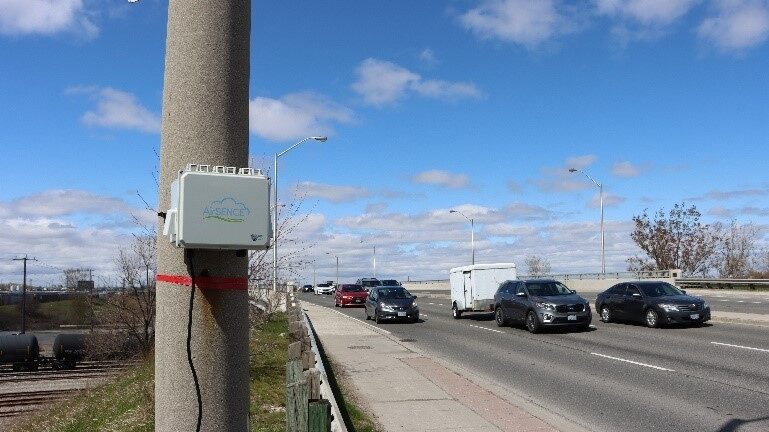Addressing the issue of air pollution on a global scale requires identifying solutions and taking action at a local level. The development of tools such as low-cost air quality sensors allows us to monitor our environment at local scales in an affordable and accessible way. Air Quality Researchers have developed programs with students, teachers, and other community members to monitor air quality in cities around the world, and identify solutions to reduce exposure to unhealthy air for vulnerable populations.
Air pollution is a familiar environmental health hazard. We know what we’re looking at when brown haze settles over a city, exhaust billows across a busy highway, or a plume rises from a smokestack. Some air pollution is not seen, but its pungent smell alerts you. When the National Ambient Air Quality Standards were established in 1970, air pollution was regarded primarily as a threat to respiratory health. Over the next decades as air pollution research advanced, public health concern broadened to include cardiovascular disease; diabetes mellitus; obesity; and reproductive, neurological, and immune system disorders.
Kids spend about six hours in school breathing the air inside and outside of the school facilities. Many schools and childcare centers in urban areas are near industrial facilities and high traffic roads. In addition, pollution sources such as idling buses, energy generation facilities, and chemicals in cleaning products can contribute to overall air pollution in schools. In order to tackle this problem, it is first necessary to understand and identify the sources of the air pollutants and, where and when they impact vulnerable populations of students. By monitoring air quality, schools can predict, plan, and manage solutions to reduce exposure for those most vulnerable, and to mitigate and improve the air quality in their centers.
Exposure to air pollution, defined as a mixture of solid particles and gases in the air can affect everyone’s health. Research shows that poor indoor air quality in schools and offices is related to decreased concentration, lower productivity, and it contributes to many health problems including asthma attacks, headaches, fatigue and nausea. Children are particularly susceptible to the negative impacts of air pollution. According to data from UNICEF and the World Health Organization, continuous exposure in childhood can lead to permanent respiratory health issues such as asthma and lung cancer.
Air pollution is a mix of hazardous substances from both human-made and natural sources.
Vehicle emissions, fuel oils and natural gas to heat homes, by-products of manufacturing and power generation, particularly coal-fueled power plants, and fumes from chemical production are the primary sources of human-made air pollution. Nature releases hazardous substances into the air, such as smoke from wildfires, which are often caused by people; ash and gases from volcanic eruptions; and gases, like methane, which are emitted from decomposing organic matter in soils.
It is not only the government’s responsibility to initiate measures of curbing, but also a sincere duty of the inhabitants of the affected area to take steps for prevention. The laws regarding factories and industries have to be revised and strictly executed in order to lower down on the harmful emissions. The number of air-quality monitoring stations needs to be increased for spreading awareness and regular monitoring. The common people can also contribute to the same by taking small steps such as using public transport, less outdoor burning activities, and generating awareness.

